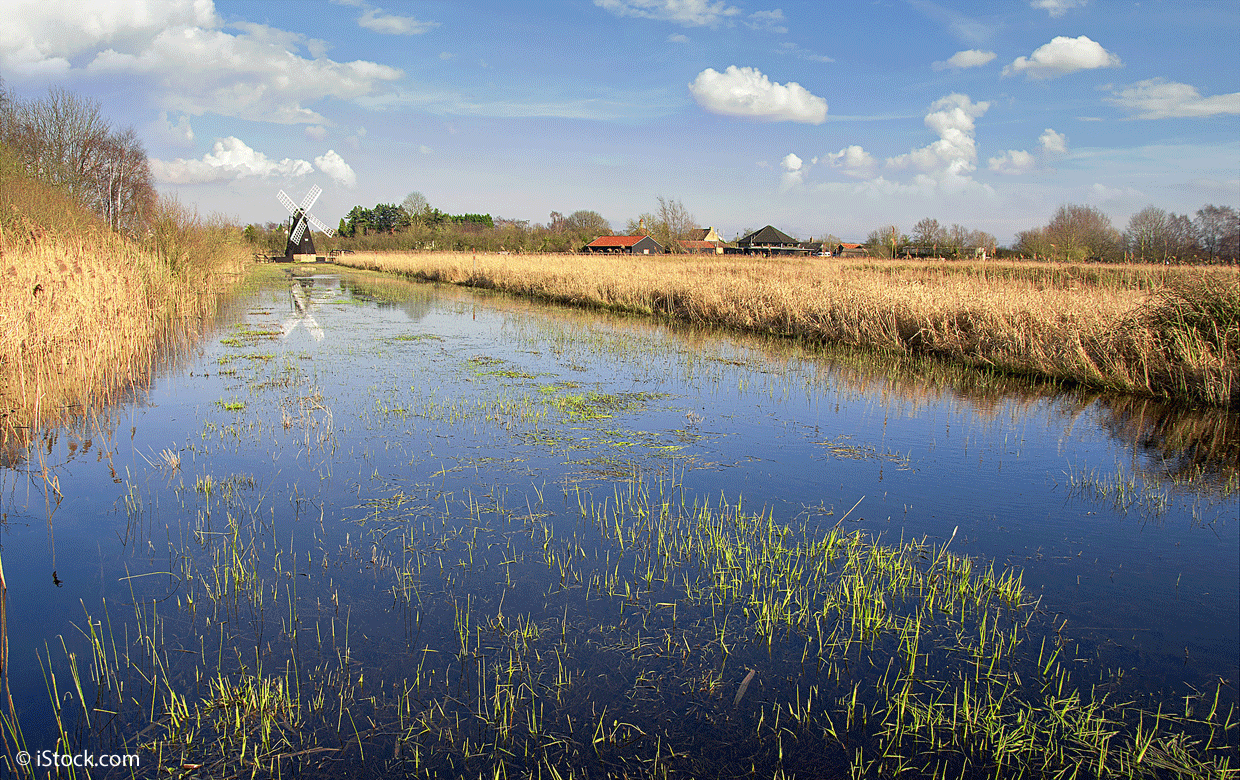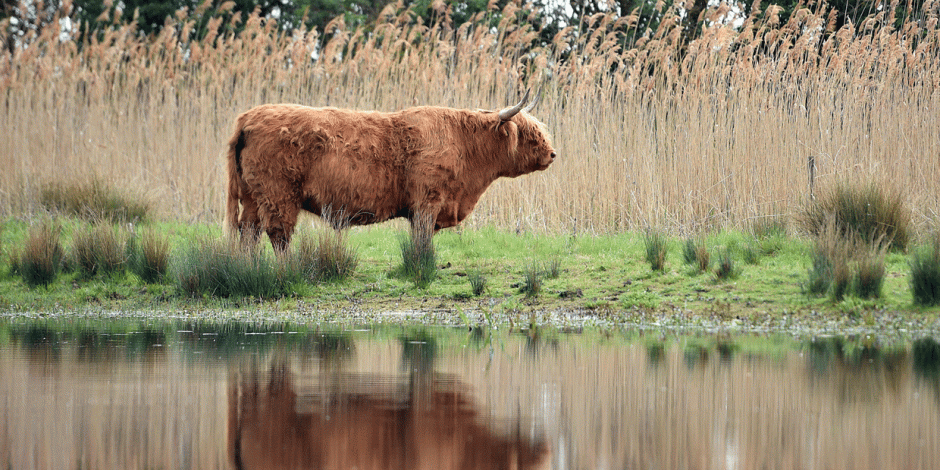There’s whispering and rustleraschelnrustling around me as the wind moves through the tall grasses. I’m on board the Mayfly, a small electric boat on Wicken Fen, the National Trust (UK)Organisation für Natur-, Kultur- und DenkmalschutzNational Trust’s oldest nature reserve. Located 15 kilometres south of Ely in Cambridgeshire, Wicken Fen is a rare, undrainednicht trockengelegtundrained fenlandMarschland, Feuchtgebietfenland habitatLebensraumhabitat and lies at the heart of an ambitiousehrgeizigambitious rewilding Renaturierungrewilding project.
The Fens is a region of reclaim sth.etw. zurückgewinnenreclaimed land covering 4,000 square kilometres of eastern England. Mostly fertilefruchtbarfertile farmland, this was once all wild marshSumpfgebiet, Moormarsh and small lakes, regularly flooded by rivers and the sea. It was a safe home for wildlife. But now, less than one per cent of the original Fens remains.
launch sth.etw. ins Leben rufenLaunched in 1999, the Wicken Fen Vision is a 100-year plan to restore sth.etw. zurückführenrestore natural Fenland habitat to a large area of farmland. The rewilding at Wicken Fen has already produced remarkable results: it’s now home to 9,600 species, some rare and endangeredgefährdet, vom Aussterben bedrohtendangered. It also attracts human visitors from far and wide, to the benefit of the local economy.

The great wide open
The boat glides quietly along a “lode”, a narrow, man-made waterway used for navigation and drainage. It’s steer sth.etw. steuernsteered by Neil, a volunteerfreiwillig, ehrenamtlich Tätige(r)volunteer whose family are local farmers. “See the fields?” he asks, pointing at the rich, dark soilErdbodensoil. “They’re about two metres lower than us. When the Fens were drained, the peatTorfpeat shrank, and much of the land is now below sea levelMeeresspiegelsea level.”
Most of the Fenland drainage was done in the 1630s, to create new farmland. Mechanized pumps kept the land dry. Today, the Fens are still protected by a system of embankmentEindeichungembankments, pumping stations and waterways.
I’m keen: be ~ to do sth. (UK)etw. unbedingt tun wollenkeen to see some of the ancient breedRassebreeds of cattleVieh, Rindercattle and ponies used to sustainablynachhaltigsustainably graze the fen. So, after a quick coffee, I set offsich aufmachenset off along the Adventurers’ Trail.
Before long, I’m all alone, with Baker’s Fen to my right and a huge sky above. I find Highland cattle – recognizable by their reddish-brown coats and long horns – grazing in the boggy grass.
Now, where are the ponies? At Burwell Lode, on the other side of a footbridge, I spot a herd of small, pale animals: Konik ponies, swishing their dark manes, completely at home in the fen. This primitive breed of pony, originally from Poland, lives completely in the wild.
On my return, I pause at one of the bird hides, binoculars ready, to watch the flocks of geese and wading birds.
Read the full article in our eMagazine!
Neugierig auf mehr?
Dann nutzen Sie die Möglichkeit und stellen Sie sich Ihr optimales Abo ganz nach Ihren Wünschen zusammen.



